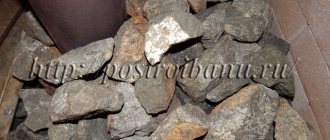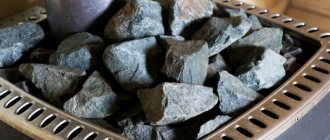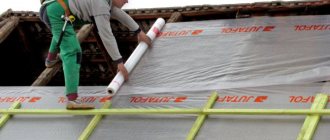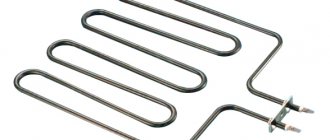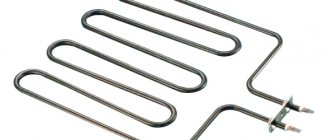To arrange a steam room, you can choose a wide variety of stones for a bath; granite is also included in this list. It is not as common as other minerals and is not used as often. There are many varieties of the mineral granite. They differ in structure, color, as well as the dark-colored components they contain.
However, some experienced bath attendants refuse granite due to the large proportion of mica present in the composition. It promotes faster separation of the rock.
Important Features
Let's start by highlighting what is most significant for a bathhouse. We want:
- so that the stone serves for a long time without or with minor replacement;
- so that for a long time after the stove is turned off, the heat that is essential for heating emanates from it;
- the bath heats up faster during operation of the stove ;
- so that health does not suffer from stones, but, on the contrary, improves.
- so that the stones are not too expensive (ideally, they are free))).
Different stones for a bath: which ones are better?
These are the requirements. Translating into the language of physics, we need heat-resistant , heat-intensive stones, with good heat transfer . Plus, of course, they are cheap and environmentally friendly . It would be optimal to choose those with all indicators above average. (By the way, ordinary water has the highest heat capacity; it is twice as high as that of brick for the same volume.)
Bath stones: which ones are better in terms of durability
There are two approaches: those rocks that last longer in the bath are those that are of igneous, deep origin and more or less alkaline composition (that is, the amount of silica is no more than 50%). But this is a good definition for geologists, and ordinary people are better able to navigate among the numbers. We will provide the corresponding sign, but we must warn:
IMPORTANT! The service life of a stone depends on so many factors that it is impossible to predict . The deposit, composition, impurities, type of stove, frequency of using the bathhouse, even the size and shape of the stones matter.
First of all, of course, the mineral composition of the rock and the heating temperature in the furnace . People far from geology believe that stones have the same composition if they are called by the same name. In fact, the mineral composition is variable , because the conditions of formation differ in some way. And there is much more, for example, the replacement affecting part of the production from the same field. Therefore, you need to look at specific samples.
However, here is the promised table, which allows you to very roughly estimate the heat resistance of the stone and the time it will live in the oven :
LONGEVITY TABLE
| Name | Term |
| Nephritis | 10 years |
| Jade | 4 years |
| Jasper | 2 years |
| Chromite | 5 years |
| Quartz | 3 years |
| Soapstone chlorite | 3.5 years |
| Dunit | 6 years |
| Quartzite | 4.5 years |
| Porphyrite | 5 years |
| Gabbro-diabase | 2 years |
| Cast iron | 6 years |
| Porcelain | 10 years |
As you can see, in terms of longevity, there are two candidates for the best stones for a sauna stove - jade and ceramic balls . We would also add here indestructible balls made of food-grade stainless steel . This trinity will really live for a long time in a sauna stove. But each of these materials will cost a pretty penny. (By the way, ceramics also vary in composition.)
Which stones are best for a steam bath in terms of heat capacity?
If you are not in a hurry when you are going to take a steam bath, then spare no time and firewood for the most heat-intensive stones. Here is a small table that lists not all, but many of the bath stones:
TABLE OF DENSITY, THERMAL CONDUCTIVITY AND HEAT CAPACITY
| Breed | Density g/cm³ | Thermal conductivity coefficient W/(m*K) | Specific heat capacity kJ/(kg*K) |
| Basalt | 2,6-3,25 | 0,4-3,5 | 0,5-2,1 |
| White quartz | 2,6—2,65 | — | 0,75 |
| Gabbro-diabase | 2,79-3,3 | 1,7-3,3 | 0,8-0,9 |
| Granite | 2,34-2,76 | 1,1-3,9 | 0,2-1,5 |
| Dolerite | 2,79 — 3,3 | see basalt, gabbro-diabase | see basalt, gabbro-diabase |
| Dunit | 3,28 | 1,1-1,9 | 0,6-0,8 |
| Jade | 3,25-3,35 | 2,3-3,6 | 0,88 |
| Raspberry quartzite | 2,68 | 2,6-7,6 | 0,7-1,3 |
| Jade (amphibolite) | 2,95-3,4 | 1,6-2,9 | 1,0-1,2 |
| Peridotite | 3,2-4,4 | 3,8-4,9 | 0,9-1,1 |
| Porphyrite | 2,67 | 0,7-3,5 | 1,6-1,7 |
| Rodingitis | 2,99 | — | — |
| Soapstone chlorite | 2,7-2,98 | 3,3 | 0,98 |
| Chromite | 4,5-5,0 | — | — |
| Jasper | 2,6 | — | — |
Again, the table clearly shows that the best stone for a bath in a steam room in terms of heat capacity is porphyrite. basalt into account due to the wide spread of values, but its relatives - dolerite and gabbro-diabase, although they do not have the same high heat capacity, are still more than competitive - they benefit due to their good heat capacity and low price .
You may also have noticed that the values are mostly around one - a little more, a little less, but there is no big scatter.
By the way, the same clay can, in certain conditions, accumulate heat in greater quantities than any bath rock - clay has values of up to 3.6 in the wet state (due to heat-intensive water). This means that the choice is always made simultaneously according to several criteria. Let's continue to consider them.
Stones for the stove in the bathhouse: which ones are better for health safety
This is not an idle question. First, let’s find out why bath stones can be dangerous in general. Firstly, radiation . Secondly, sulfides and other impurities , which burn out at high temperatures to form compounds harmful to humans. Thirdly, mechanical destruction, the result of which is fine dust , harmful to breathing.
Radiation
If a rock is formed at great depths in the mantle, then it will, in principle, not contain radioactive elements that are concentrated in the earth's crust. jadeite , dunite , and peridotite without any fear . All other breeds were formed higher in one way or another. But most of them do not pose any radiation hazard. The exception is granite, which may well have an increased background radiation. But, since it does not meet other characteristics, it can be forgotten.
Sulfides
Yes, this is an unpleasant “additive” to stone, which is often found in nature. There are many complaints about Karelian stones.
Sulfide decomposes at high temperatures, forming sulfur oxides, which form acids with water. Inhaling air containing sulfuric acid vapor is extremely undesirable for people.
Sulfides are easily identified visually - as gray and dark gray veins and spots with a metallic sheen or as golden crystals on the surface of the stone.
The photo gives an idea of what the sulfide may look like on the surface. But they are all dark gray with metallic. shiny or yellow, like pyrite. Photo source: Rosettes of Molybdenite, by subarcticmike's, licensed under CC BY
IMPORTANT! Follow the rule that the amount of sulfides on the surface of the stone should not be more than 5% of the total surface area. Of course, you will have to determine by eye, but still. If there are less than 5% of them, then they will simply burn out in 1-2 fires without a trace. Although it will be unpleasant, it will not last long.
Sulfides are the scourge of many stones ; there is no point in listing them, just be more careful when choosing.
Other impurities
Among other impurities we would include creosote and other substances of technogenic origin. The best from the point of view of their absence will be stones that were not paving stones or were not picked up near the railway or industrial facilities .
Dust
All stones are destroyed sooner or later, turning into sand and dust. Therefore, the heater needs to be cleaned regularly. As for soapstone, do not try to wash it clean - it tends to secrete talc and scaly chlorite, it will do this all the time it lies in the heater. Therefore, if you have a choice, then make it in favor of soapstone .
Or just put other stones that don't generate dust. It is very good for finishing. So, the best ones in terms of safety are certified stones without impurities.
Best stones by cost
Everything is simple here: better is cheaper. And gabbro-diabase remains the cheapest of the purchased stones.
We can quite reasonably recommend this particular stone, because it has suitable heat resistance and heat capacity. It is suitable for a heater due to two main characteristics. Whether it will collapse in 2 years, as the leaflet compiled by the sellers promises, or whether it will last 6-10 years depends on the case and type of stove, but this applies to all stones. Some people pick up pebbles in the forest and they last for 12 years; for others, jade does not last for a year. There are fakes and low-quality samples, but if the stone is cheap, then it is easy to replace.
Video on the topic
IMPORTANT! Complaints about the odor emitted by gabbro-diabase are complaints about sulfides . They are not always attached to the stone. Inspect samples before purchasing.
Well, you get the general idea, let's summarize what has been said.
Where can it be used?
According to sanitary and hygienic standards, gabbro-diabase stone is one of the rocks permitted for use in construction with background radiation not exceeding permissible standards. This material is used quite widely in industry.
One of the features of gabbro-diabase is its interesting fine-grained structure. This stone is polished better than, for example, granite and basalt. Therefore, it is sometimes used as a facing material in the construction of buildings and structures. This breed can also be used:
- for the manufacture of paving stones (for example, exactly this material was used on Red Square in Moscow);
- in precision engineering.
Very often, tombstones are made from such stone. Polished black gabbro-diabase looks very solid and presentable. Therefore, tombstones made from it, like no other, create an appropriate mournful and solemn atmosphere at the burial site. For the manufacture of monuments, Karelian diabase is usually used, which can maintain polish for a long time.
Very often this breed is used to create optimal temperature conditions in baths. That is, they simply put these inexpensive stones in the heaters. Dense gabbro-diabase can retain heat very well and for a long time. In addition, the material is absolutely environmentally friendly.
Like granite, gabbro-diabase is often used in the interiors of apartments and houses. This material is used, for example, to make countertops, railings and window sills. Such products actually look very impressive. In addition, they also have very good performance characteristics.
What is the best stone for a bath?
There can be no definite answer here. We said:
- the most durable - jade, ceramics and stainless steel;
- the most heat-intensive is porphyrite;
- the safest are jadeite, dunite, peridotite (and all of them are not immune to sulfides, by the way)
- the cheapest is gabbro-diabase.
And if we add to this what the owners of saunas with heaters filled with jade say... The quality of the steam also matters, right?
Therefore, we are still forced to cheat a little and say a completely expected banality:
- if you have the financial opportunity , it is worth buying jade, jadeite, ceramics and stainless steel;
- if the bathhouse is budget , then it is better to opt for porphyrite, gabbro-diabase and dunite.
And, of course, you are free to mix stones - natural or artificial - at your discretion.
We do not recommend taking quartz, basalt, serpentine (serpentinite) , rodingite, granite and jasper.
Soapstone is better than soapstone because magnesite is more heat resistant than chlorite.
If our opinion is not enough, read user reviews and the rating (in the compilation of which, by the way, each of you can take part).
Physical properties of the rock
The properties of gabbro-diabase, among other things, are distinguished by the following:
- High degree of density - 3.07 g/cm3.
- Compressive strength - 311 MPa.
- Low degree of abrasion - 0.07 g/cm2.
This stone is also characterized by frost resistance. Gabbro-diabase tolerates temperature changes well. The breed can withstand up to 300 cycles of temperature fluctuations without harm. The radioactivity of this material is up to 74 becquerel/kg. In terms of strength, this type of diabase surpasses even granite.
The best stones for a bath: reviews
By the way, everything is always complicated with reviews on the Internet; it’s better to go for an experiment and trust your own feelings than to strangers writing for unknown reasons.
Let's take the same jadeite . There are many reviews about “the best stone in the world,” but if you analyze them, the main advantages are: the steam has become lighter, the smell is pleasant. No one was healed by the healing stone, threw away their crutches and started dancing.
And there is reason to think about whether a person gets the most pleasure from the money spent? Checking it is as easy as shelling pears: buy a box (20 kg) of high-quality jadeite, put it in the top layer and try the steam. And the toad will not strangle, and the impressions will be personal, not from words.
The best reviews are those indicating the brand of the stove, operating mode, duration and results.
One of the users says that he had two stoves at his disposal: Angara 2012 and Compact .
The compact was loaded with a mix, the revision was carried out 4 years after loading. It turned out that the following rocks suffered the most: abbro-diabase and crimson quartzite. Soapstone chlorite produced the most .
The jadeite did not break at all, so the user loaded the new stove exclusively with jadeite - both into the open and closed heater. Two years later, I carried out the first inspection: in the open one, nothing happened to the stone, but in the closed one , it broke into small fragments about 1/5 of the entire backfill.
Other users are in no hurry to share such detailed information. Someone boasts that his gabbro-diabase from Karelia stood for 10 years, and during the inspection only a few broken stones had to be replaced, and a little sand had to be raked out.
Another steamer reports the absolutely fantastic survival of soapstone from the Onot talc deposit : the stone worked for more than three decades in different furnaces!!!
Sometimes stones found independently in nature also demonstrate good survival: one user enjoyed steam from
forest stones , another reported the survival of pebbles from a neighboring field for 10 years.
From the examples given, it is clear that no one has used all the options, but considers the best stones for a bath to be those with which he has dealt.
On the other hand, in the reviews there is nothing contrary to the nature of the stone: if you do not heat it to the limit, do not “wash” it with an open fire, in which everything oxidizes at a terrible speed, then it will live in your stove happily ever after. And if the stove is intermittent, with an open fire, then you need to be prepared to frequently replace the contents of the heater.
Video
Listen to a professional's advice on choosing the best stones:
And here is a review from a simple user.
And if you agree that there is nothing better than your own experience, then maybe share it with us? We decided to invite all readers who have experience using different stones and have formed their preferences to vote in our rating of bath stones:
When quantity is important
The role of stones in a steam room largely depends on its type and model of heater. For small electric heaters weighing 10-20 kg, stones are needed not for steam generation, but to protect heating elements from overheating and people from hard infrared radiation from metal. With such a volume, even heat-intensive stones will only smooth out temperature fluctuations, but will not be able to accumulate much heat.
As the volume of the heater increases, careful selection of stones plays an increasingly important role. The general rule is: the more stones in the stove, the longer they will maintain the temperature in the steam room and the more high-quality steam you can get from them. Moreover, by changing the type of stones, you can significantly change the characteristics of the heater itself. For example, for a 200kg stove, jade can provide additional hours of steaming after the fire goes out compared to quartz.
Therefore, try to choose a larger stove and always completely fill the entire volume of the heater with stones. Of course, if you like a Russian bath, and not a Finnish dry-heat sauna.
Rating
Don’t be shy, vote, your opinion will add objectivity to such an important issue for every vaper.
If you want to find out who is currently claiming the title of “the best stone for a bath,” select your option - the results will then open automatically.
*** We wish you to find the most useful stone or mix that gives the perfect steam for you and your guests. For more materials on stones, see the section page.
And when the best breed or mixture has been chosen, it’s time to read about placing it in a stove or electric heater.
